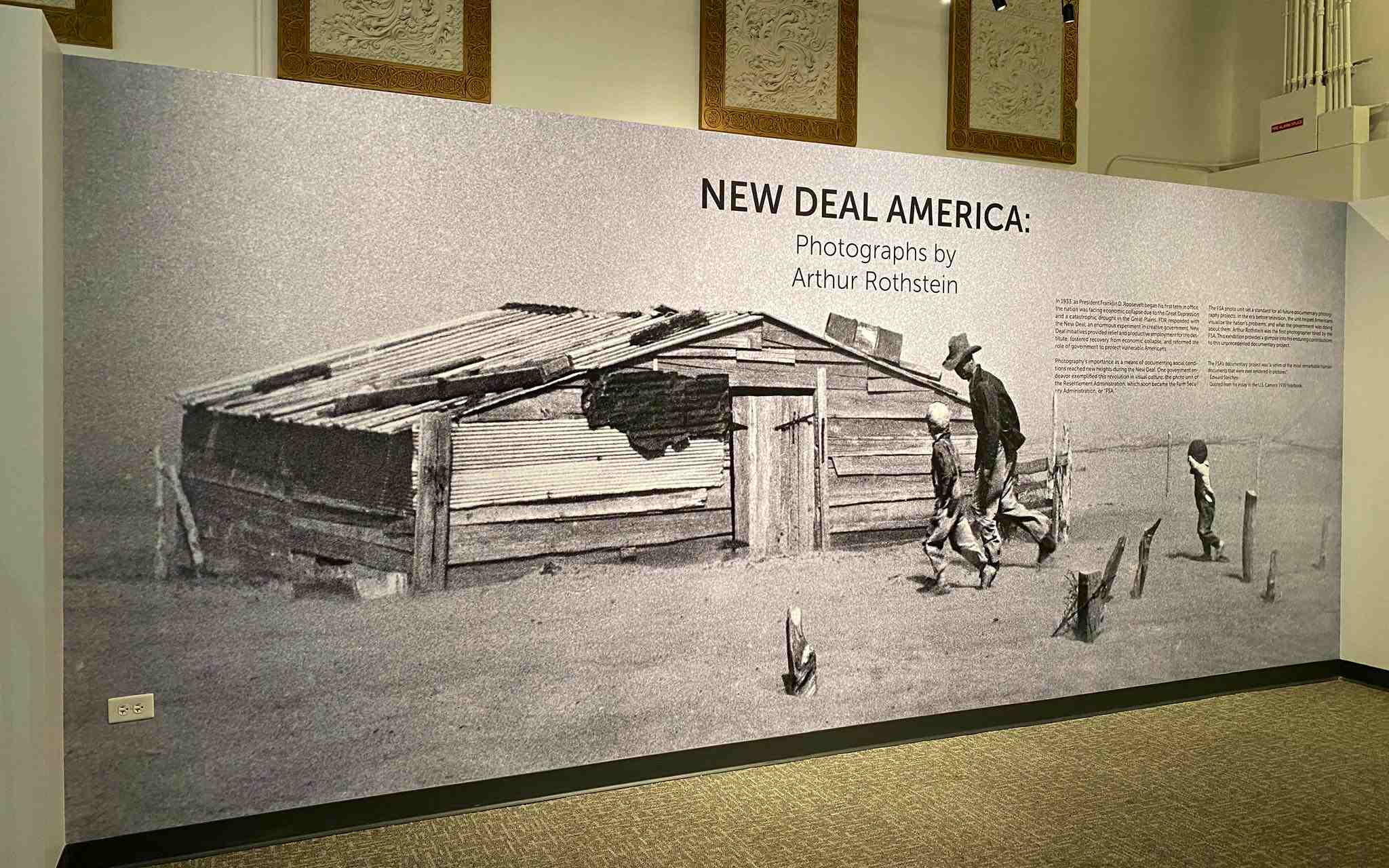
Coinciding with the 90th anniversary of the New Deal, Roosevelt University’s Gage Gallery is hosting an exhibit titled “New Deal America: Photographs by Arthur Rothstein.” Running through May 2024, the exhibit features images from the acclaimed photographer’s travels through the rural communities affected most by the Great Depression and Dust Bowl. The works exhibited include some of the most well-known photographs of the time and spotlight individuals who benefitted from President Roosevelt’s New Deal programs.
The exhibition’s opening featured a presentation by Rothstein’s daughter and historian Dr. Ann Rothstein-Segan alongside her husband, fellow historian Brodie Hefner. Together, they detailed the life and career of Arthur Rothstein and how his photography directly affected the country’s understanding of the Great Depression and the economic impact of the New Deal programs. Rothstein-Segan had this to say about the importance of this anniversary:
“Our great country has not always done right by her citizens. However, the federal programs that made up the New Deal attempted to make strides in that direction. The disenfranchised and the marginalized were represented, and those efforts should be celebrated.”
Co-sponsored by the Center for New Deal Studies at Roosevelt University and the College of Humanities, Education & Social Sciences (CHESS), the exhibit is curated by gallery director Michael Ensdorf. As gallery director, Ensdorf has this to say about the exhibit:
“We could not be more thrilled to host the ‘New Deal America’ photographs. Given the subject matter, there could be no better home for the photographs that depict such an important time in American history. I have been delighted to work with Dr. Margaret Rung, chair of the Center for New Deal Studies, on curating this Rothstein collection. I’d also like to thank Annie Rothstein-Segan and Brodie Hefner for their dedication to the work. This exhibit is a shining example of the intersection between history and the present day, of art and the political, and of education and social justice. I could not be more proud to help share this exhibit with the Roosevelt community and the greater Chicagoland area.”
The exhibit will be open to the public and for classroom visits until May 2024. Admission is free and open to the public.